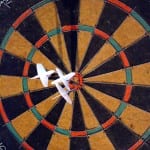 “Can you get me on Today or in The Wall Street Journal?” Some variation of that question has probably been asked of every public relations and communications practitioner. In the traditional mass marketing mode, people focus on popular consumer outlets as the place to trawl for prospects, even for business-to-business initiatives. As a result, some B2B campaigners may overlook outlets whose audiences consist entirely or almost entirely of prospects, namely the trade press.
“Can you get me on Today or in The Wall Street Journal?” Some variation of that question has probably been asked of every public relations and communications practitioner. In the traditional mass marketing mode, people focus on popular consumer outlets as the place to trawl for prospects, even for business-to-business initiatives. As a result, some B2B campaigners may overlook outlets whose audiences consist entirely or almost entirely of prospects, namely the trade press.
How Trade Media Differs from Consumer Media
Print, digital and broadcast media can be divided into either trade or consumer categories. Trade outlets are often blogs or journals (which are also called technical, professional or business journals) that focus on a specific profession, trade or industry. On the other hand, consumer outlets include general readership newspapers as well as magazines, broadcast and digital media geared toward readers who are interested in a particular subject but who do not necessarily work in the subject area.
Fortune, for example, is a well-known consumer magazine that features stories on high-profile companies, business personalities, etc. While the chain of regional trade journals from Smart Business is similar to Fortune in that it caters to business people and contains profiles of business leaders, its approach has a more“how-to” slant.
As I mentioned, blogs can be divided into those two major categories as well. In fact, many practitioners consider blogs an essential part of their trade media outreach. So, Educational Technology Guy is an example of a trade blog for educators who are interested in using different types of technology to facilitate or enhance lessons. On the other hand, Krulwich Wonders… by Robert Krulwich, NPR’s science correspondent, is a consumer blog for anyone interested in science and technology topics.
Vertical vs. Horizontal Trades
Trade magazines are either vertical or horizontal. A vertical trade publication focuses on a specific profession. For example, SignCraft is a vertical publication that covers topics specifically for sign makers. Horizontal trade magazines, on the other hand, cover a broader topic area, cutting across industries. An example is Family Business Magazine, which is designed to appeal readers running family-owned enterprises in any industry.
Determining a Good Fit
Practically every profession and industry has a trade publication and/or blog. And you know how writing experts are constantly telling you to avoid jargon? When you’re targeting trade journals, using common technical terms for that particular field is not only appropriate, it boosts confidence in your expertise.
Take care to research trade media because it can be easy to select inappropriate venues for your message. A web search for“trade media directory” or the name of the relevant field plus“blog” will provide you with several online options. You can also visit your local library, which should have a directory of publications.
Since not all stories or messages work for both trade and consumer press, you need to figure out what works where. Answer this question: Will laypeople (or a segment of that group) directly benefit in any way? If the answer is yes, start thinking of angles for consumer/trade or consumer-only opportunities. If the answer is no, get busy targeting those trades.

